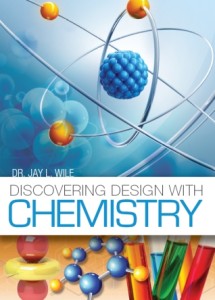
I was recently asked on Facebook about the differences between my old chemistry course and my new one. While I have touched on that issue in a couple of other posts, I thought I would provide a thorough answer to that question here.
Thoughts from a scientist who is a Christian (not a Christian Scientist)

I was recently asked on Facebook about the differences between my old chemistry course and my new one. While I have touched on that issue in a couple of other posts, I thought I would provide a thorough answer to that question here.

This post is a bit different from the standard fare you find on my blog, but it is about two of my passions: acting and chemistry. As longtime readers are probably aware, acting is a hobby of mine. I write Christian Dramas, most of which are best characterized as “skits,” and I also act in them. In addition, I do some community theater. Most of it is done at Anderson’s Mainstage Theatre as well as a new local group, The Alley Theatre. However, I have done some shows with other groups. In 2006, for example, I played Maurice (Belle’s Father) in Indianapolis Civic Theatre’s production of Beauty and the Beast. You can see a couple of scenes from the show here and here. The young lady who played Belle is one of the best actresses with whom I have ever worked, and I have worked with a lot of actresses!
In any event, I recently played the role of Abraham Van Helsing in Anderson Mainstage Theatre’s production of Dracula. The script is a relatively new one, but I think it is the best one I have seen. In the scene where Van Helsing confronts Dracula with a crucifix, the script says that Dracula is suppose to touch the crucifix, and it is supposed to briefly catch fire. I asked the director if she wanted that effect, and she said, “Yes, as long as it doesn’t look stupid.” I took that as a challenge.
Based on my past experience in the theater, I know of a substance called “flash cotton,” and based on my knowledge of chemistry, I understand that it mostly consists of a chemical called nitrocellulose. I had learned to make it for another show I was in years and years ago, so rather than buying it, I made it myself. The recipe is really simple, as long as you can get the ingredients.
Continue reading “A Chemistry-Based Special Effect for Stage”

In 2005, Dr. Mary Schweitzer stunned the scientific community by finding what appeared to be soft tissue in a Tyrannosaurus rex fossil that is supposed to be 68 million years old.1 Since then, many such discoveries have been made (see here, here, here, here, and here), and a recent study indicates that soft tissue is probably quite common in dinosaur fossils. It is obviously hard to understand how soft tissue could remain in a fossil for millions of years, so those who are forced to believe that these fossils are millions of years old have tried to figure out some chemical mechanism that would prevent the decay of tissue for such an incredibly long time.
Two years ago, Dr. Schweitzer herself proposed such a mechanism.2 After studying the soft tissue from both the Tyrannosaurus rex and a Brachylophosaurus canadensis fossil, she and her team noticed that the structures which appeared to be blood vessels had iron particles imbedded in them. They proposed that iron and oxygen could work together to prevent soft tissue decay, and they even did a two-year experiment with ostrich blood vessels to support their hypothesis. I wrote about that paper after I read it, and in my analysis I listed three reasons I was skeptical of their proposed mechanism. Two chemists who know much more about this kind of chemistry than me have written a detailed paper in the latest issue of Creation Science Research Quarterly, and in my opinion, they make it clear that Schweitzer’s proposed mechanism simply isn’t consistent with the data she collected.3
Dr. John M. DeMassa has a Ph.D. in organic chemistry from the University of Massachusetts Amherst and a Masters of Divinity from Liberty University. His full-time job is designing antioxidants, but he is also a part-time preacher. He teamed up with Dr. Edward Boudreaux, who has a Ph.D. in theoretical chemistry from Tulane. He spent most of his career as a professor of chemistry at the University of New Orleans but has since retired. They teamed up to analyze the chemistry required for Schweitzer’s proposed mechanism to work. In the end, they conclude that the mechanism would have destroyed some of the chemicals that Schweitzer’s team found in their samples.
Continue reading “More Reasons To Doubt Iron as a Preservative for Dinosaur Tissue”
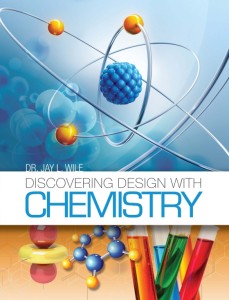
This new chemistry course is completely different from the previous one I wrote, Exploring Creation with Chemistry, 2nd Edition. It covers the standard college-prep chemistry topics in a different order, but more importantly, it emphasizes aspects of those topics in a way that makes them more relevant to this decade. For example, when discussing Dalton’s Atomic Theory, I point out that he used his theory to predict something about the masses of two elements that can react to form completely different compounds. That prediction was later confirmed, and we now call it “The Law of Multiple Proportions.” I point out that a theory can’t be considered scientific unless it can make such predictions. I then discuss this in the context of creation science. I talk about how the scientific theory of creation has been used to make many successful predictions, including the fact that there is very little “junk DNA” in the human genome.
The most important difference between the courses, however, is the experimental component. When I wrote the older course, I had the students perform the best experiments they could with reasonably-priced equipment. Since that book was written, however, the cost of certain chemistry equipment, such as precise mass scales, has gone down significantly. As a result, what is available at a reasonable price today is quite different from what was available back when the old course was written. Because of this, the experiments are significantly better in this new course.
For example, there are certain chemicals that tend to incorporate water into their solid phase. We call them hydrates. Consider the picture below:
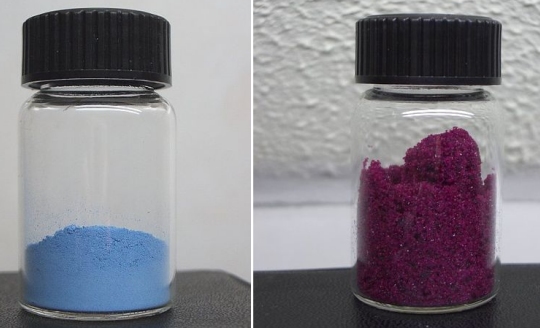
You might think these are two different compounds, but they are not. Both jars contain cobalt (II) chloride. The reason they look different is because the solid on the left has no water in it. As a result, we call it the anhydrous form of cobalt (II) chloride. The solid on the right has water in it, so we call it the hydrated form of cobalt (II) chloride. Both solids perform exactly the same chemistry. The only difference between them is the presence of water.
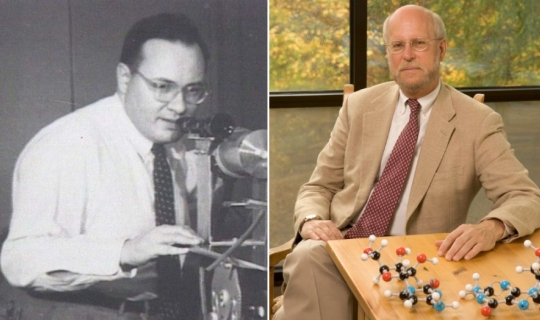
Once again, there has been a long pause in blog entries because I am working hard to finish my new high school chemistry course so it will be ready for those who want to use it during the upcoming academic year. I just finished the rough draft of the course, and my reviewers are running ahead of schedule. Thus, it looks like the course will be ready on time. I truly hope it meets the needs of homeschoolers who want a college-preparatory, scientifically-sound, and homeschool-friendly general chemistry course.
Even if you aren’t in need of a high school chemistry course, you might be interested in the way that I start and end my text, because it involves the views of two people who know more about science than I ever will know. I start with Dr. Arthur Leonard Schawlow, who shared the 1981 Nobel Prize in Physics with Nicolaas Bloembergen and Kai Siegbahn for his work on laser spectroscopy. In addition to that high honor, Dr. Schawlow was awarded the National Medal of Science, the Stuart Ballantine Medal, the Young Medal and Prize, and the Frederic Ives Medal. As a fitting tribute to him, the American Physical Society established the Arthur L. Schawlow Prize in Laser Science.
As part of a project developed by Dr. Henry Margenuau and Roy Abraham Varghese, Dr. Schawlow was asked, “What do you think should be the relationship between religion and science?” Here is his part of his reply:1
But the context of religion is a great background for doing science. In the words of Psalm 19, “The heavens declare the glory of God and the firmament showeth his handiwork.” Thus scientific research is a worshipful act, in that it reveals more of the wonders of God’s creation.
I strongly agree with Dr. Schawlow. Using science to study God’s creation is what led me to believe in Him, and every time I learn something new about His creation, I am filled with awe and wonder.
I use Dr. Schawlow’s quote in the introduction to my chemistry book to let students know that science is more than just an academic exercise. It is a way to come to a deeper appreciation of God’s majesty and power.
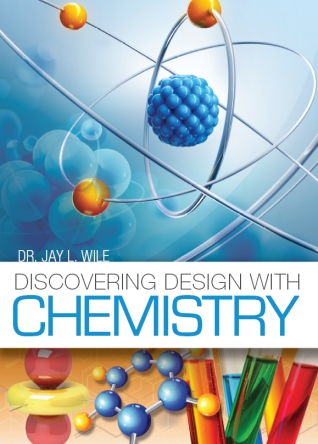
I wanted to use this blog post to give you an update on the course. I am just over three-fourths of the way done with my rough draft, and my reviewers are keeping pace with me. As a result, I currently see no problem with meeting the deadline. This means that, barring some unforseen circumstances, the course will be available on August 17th of this year. Thus, if you are looking for a homeschool-friendly, college-preparatory chemistry course for this coming year, you can consider using my new course.
To get an idea of the course content, look at the table of contents as it exists so far. You will see that after a necessary discussion of measurement, units, and significant figures, I introduce students to the classification of matter. Then, I discuss atoms and molecules, so students learn how matter is constructed. This leads to a discussion of molecular geometry as well as the distinction between chemical and physical change. After a brief discussion of physical change, most of the rest of the course concentrates on chemical change. The students learn about several different types of chemical reactions (formation, decomposition, single and double displacement, combustion, acid/base, and reduction/oxidation), and along the way, they learn one of the most important concepts in all of high school chemistry: stoichiometry. In case you don’t know that term, it is the process by which you can calculate the quantities of substances in a chemical reaction. In addition to all that, the students learn about solutions, gases, heat and its effect on matter, the energy associated with chemical reactions, the speed of chemical reactions, and chemical equilibrium.
While the topics covered in this course can be found in pretty much any college-preparatory high school chemistry course, there are three things that separate this course from the other ones that are currently available.
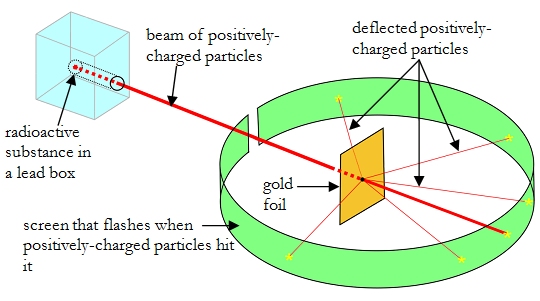
NOTE: You can get updates on the progress of this course by signing up at the publisher’s website.
If you read my review of the newest edition of Exploring Creation with Chemistry, you know that there are significant issues which make it very difficult to use in a homeschool setting. As I stated in that review, I was afraid that I was being overly harsh in my analysis, so I sent it to two other PhD chemists to look over. One of those chemists gave it to two students who had used the older edition of Exploring Creation with Chemistry and were successful in his university-level chemistry course. Based on input from those four sources, I changed the review and posted it.
In addition to sending it to the two chemists, I also sent the original review to the publisher of Exploring Creation with Chemistry on January 8th, a full month before I ended up posting my review. I asked the publisher to make the older edition available for those who would like to have a more useful version of the course. It has been more than two months, and I have heard nothing from the publisher. I suspect that the publisher has studied my review, because they posted an incomplete errata sheet for the book. It corrects many of the errors I noted, but surprisingly, not some of the major errors, such as the physically-impossible Figure 3.3 and the claim that Robert Boyle wrote The Wisdom of God Manifested in the Works of Creation.
Since my review was posted, several homeschoolers have asked for my advice regarding what they should use for chemistry next year. They share my views and don’t want to use the new edition of Exploring Creation with Chemistry. I have been recommending that they just use the older edition, but the number of copies available in the used market is declining. I have also been asked the same question by instructors who teach online chemistry classes. They don’t want to use the new edition, and they don’t think they can rely on the used market when it comes to telling their students what course to purchase.
All of this feedback led me to make this a matter of prayer. After a lot of praying, a significant number of discussions with homeschooling parents and online teachers, and some counsel from an attorney, I would like to announce that I am currently writing a new high school chemistry course that will be available on August 17th of this year.
Continue reading “A New High School Chemistry Course Available August 17th”
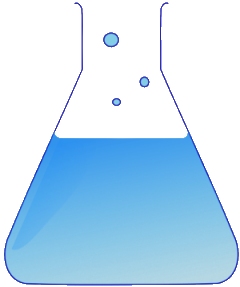
Now please understand that I reviewed the entire book and wrote the first draft of my review almost a month ago. When I got done, however, I became concerned that I was being overly harsh and nitpicky. As a result, I sent my review to two chemistry PhDs to read. One of them is a university professor, and the other is an industrial chemist who has used both the first and second editions of Exploring Creation with Chemistry in homeschool co-op courses that he facilitated. The university professor decided to give the review to two of his students, both of whom used the second edition of Exploring Creation with Chemistry in their high school education. Both of them are excelling in their university-level chemistry courses.
Based on the comments of those four individuals, I changed the review. I removed the things they thought were not real issues, and I changed the overall tone as well. In the PDF document linked below, you will find a three-page general review that outlines the problems I have with the new edition, and then a detailed list of the 77 major problems I found in the book, 11 odd things that didn’t make sense, and the 65 typographical errors that I found:
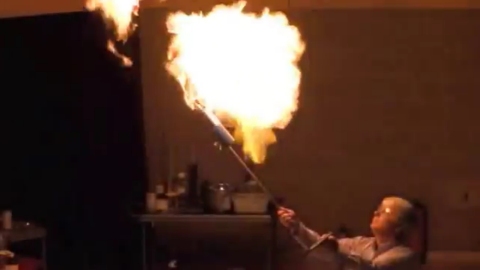
I haven’t written much about the chemistry course I am teaching at Anderson University, but it has been going very well. In fact, it is almost over. I don’t know whether or not I will do it again. It is a lot of fun to be teaching in a live classroom, but it also takes a lot of time to do it right. Unfortunately, that means less time for writing. Whether or not I do it again, I am glad I that did it this time.
As a part of my duties at Anderson University, I was asked to give a lecture for the public that is part of a very interesting series that the School of Science and Engineering is hosting. They said the lecture could be about anything, so I decided to share with the audience the fun you can have with chemistry. In the end, this turned into a lecture about fire, because I am a bit of a pyromaniac. I personally think all chemists are pyromaniacs, at least to some extent.
I started the lecture with burning gases that were held in balloons. Along the way, I taught the audience the basics of combustion. You can see a video of that part of the lecture below. Unfortunately, the camera had a bit of trouble focusing, because we dimmed the lights so the fire could be seen better. In addition, the best part of the lecture (burning a mixture of hydrogen and oxygen) did not translate well on video. The result was a loud explosion that shook the hall, but the camera’s automatic volume adjust ended up making it sound pathetic, so I cut it from the video. Nevertheless, I think you will enjoy the video segment, and I hope you learn from it as well.

Today was my first day teaching general chemistry at Anderson University. I promise I won’t be reporting on every class session, but I couldn’t resist talking about this one. I started the class with a little demo. Prior to class, I had soaked a Q-tip in a slightly acidic solution of phenolphthalein, an acid/base indicator. In presence of an acid, it is clear. In the presence of a base, it is pink. I used the Q-tip to write the name of the course (Chem 2110) on a large sheet of paper, and it dried clear. I soaked another Q-tip in a solution of potassium ferrocyanide (which is a light yellow color) and wrote my name on the same piece of paper, right over where I had written the course name. It also dried clear. When I set it up, then, the students saw a blank sheet of paper.
I then sprayed the paper with a very weak solution of sodium hydroxide. The base caused the phenolphthalein to turn pink, revealing the class name. It had no effect on the potassium ferrocyanide. I then sprayed the paper with a weakly acidic solution of iron (III) chloride. The acid caused the phenolphthalein to turn clear again, so the course name went away. The iron (III) chloride reacted with the potassium ferrocyanide to bring out my name in blue. I love that demo, and at least a few of the students seemed to appreciate it.
After going over the syllabus and discussing the mechanics of the course, I decided to start by giving one of the best descriptions of science I have ever heard. It comes from Dr. Henry F. Schaefer III, the Graham Perdue Professor professor of Chemistry at the University of Georgia. He is one of the most important chemists of our time, and here is what he says about science:1
The significance and joy in my science comes in those occasional moments of discovering something new and saying to myself, ‘So that’s how God did it.’ My goal is to understand a little corner of God’s plan.
I told the students that as far as I am concerned, that’s what science is all about – figuring out how God did it and trying to understand a small piece of God’s amazing plan for His creation. I then went on to discuss the introductory material for the course.
I was pleased to find out that two of the 61 students in my class had used my high school chemistry book! I wrote that book to prepare students to study chemistry at the college level, and I have received many notes from students, parents, and teachers indicating that it has. It will be interesting to see whether or not these two students have a similar experience.
It looks like the semester is off to a good start!
1. Sheler, J. L. and J.M. Schrof, “The Creation,” U.S. News & World Report (December 23, 1991), pp 56-64.
Return to Text